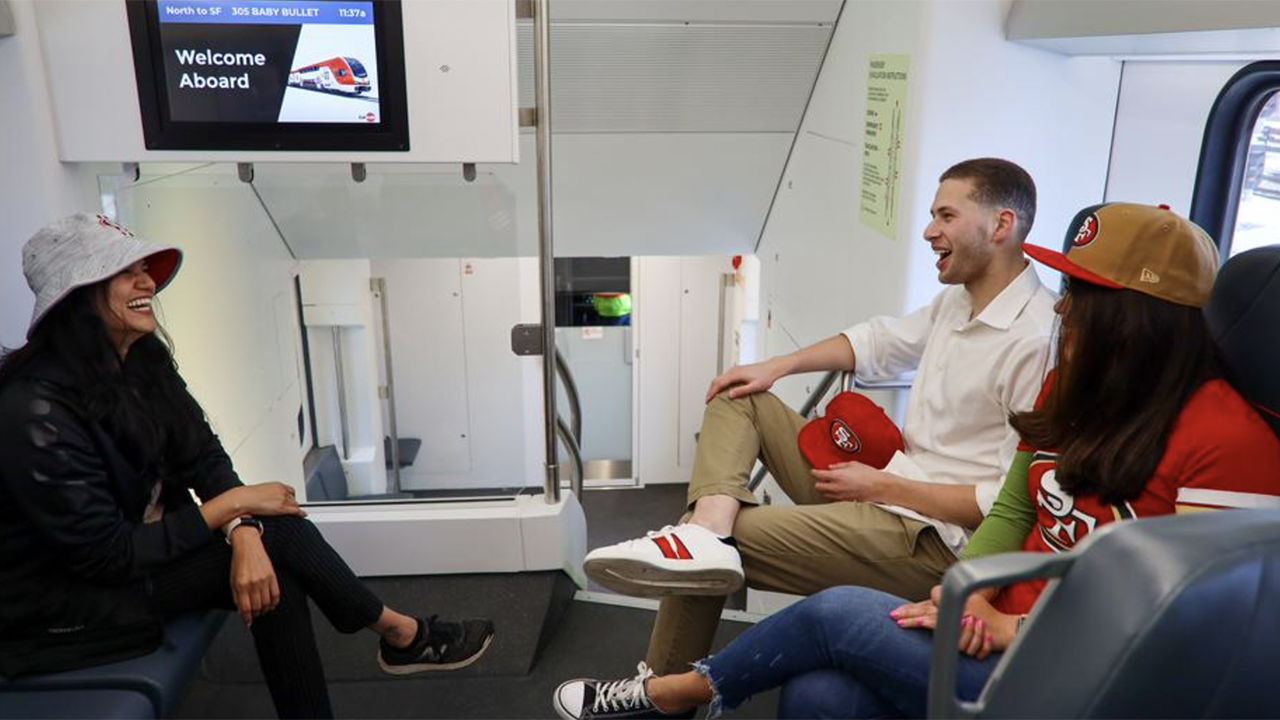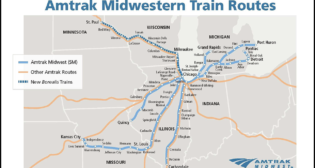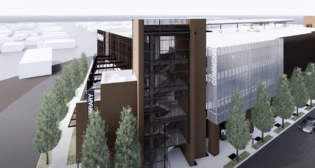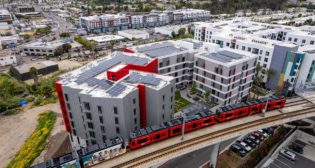
Transit Briefs: Caltrain, Metrolink, Metrolinx, SCVTA
Written by Marybeth Luczak, Executive Editor
Caltrain expects to roll out electrified commuter rail service, including faster trains, less wait time at stations and a simplified schedule, starting September 2024. (Caltrain Photograph)
Caltrain releases a proposed service plan for its September 2024 Electrification Project rollout. Also, southern California’s Metrolink commuter rail service is launching a fare-free pilot program for students; Metrolinx provides a behind-the-scenes look at one of the most unique stations along Toronto’s Eglinton Crosstown LRT; and inflation and other factors boost the price tag of Santa Clara Valley Transportation Authority’s (SCVTA) BART Silicon Valley Phase II Extension Project.
Caltrain

Caltrain on Oct. 5 reported that it expects to roll out electrified service, including faster trains, less wait time at stations and a simplified schedule, starting September 2024. This is two years later than planned. The commuter railroad’s $2.4 billion electrification project will upgrade and electrify its double-track system from the 4th and King Station in San Francisco to the Tamien Station in San Jose.
The proposed electrified service plan includes the following improvements:
- 104 weekday trains, with four trains per hour per direction during peak times between San Francisco and San Jose.
- Express trains are anticipated to be about an hour between San Francisco and San Jose. Caltrain reported that there will be a “significant expansion” in the number of stations that receive express service.
- Local trains are slated to stop at every station, and the commuter railroad said travel time from San Francisco to San Jose will be reduced by 25 minutes compared with today’s local schedule.
- On weekends, subject to “additional financial analysis and budget confirmation,” Caltrain said it expects to offer service every 30 minutes, which will halve the wait time riders currently experience.
- The corridor south of Tamien Station in San Jose, which is owned by Union Pacific and is not included in the electrification project, will still be served by four daily roundtrips using diesel trains to maintain connectivity. According to Caltrain, there will be a seamless three-minute cross platform transfer at Diridon Station, and overall, travel times will be “substantially reduced” to San Francisco and other mid-Peninsula destinations.
The new Stadler-built KISS bilevel EMUs will accelerate and decelerate more rapidly than the current diesel fleet, which is how Caltrain can achieve the proposed schedule with additional frequency and faster travel times, the railroad said.
Caltrain awarded Stadler a $551 million contract in August 2016 for 16 six-car EMUs, with an option for a further 96 cars worth an additional $385 million. In December 2018, Caltrain exercised an option to extend the trains from six to seven cars, and ordered another three seven-car trains. Caltrain has received four EMUs with further deliveries expected this fall. Caltrain in August reported that its Board approved exercising options on its contract with Stadler for four more EMUs. The new electric trains will offer Wi-Fi; electrical outlets at every fixed seat; bathrooms with a baby-changing table; a smoother and quieter ride; digital on-board trip information systems to communicate information to riders; and reduced noise and pollutants for riders and residents along the corridor, the railroad reported.
Weekday peak hour trains are slated to cover 79 stations per hour, an increase from the current 66. Also, 11 stations would experience four train arrivals hourly per direction, an improvement from seven stations currently. Midday trains are expected to cover 44 stations per hour, up from 34 today.
Caltrain said that current ridership stands at approximately 500,000 trips monthly, with average weekday boardings surpassing 20,000, continuing to mark year-on-year growth. This ridership growth is even with two dozen weekend service shutdowns for the electrification construction, according to the railroad.
Caltrain is seeking public feedback on its proposed electrified service plan throughout this month, with the final plan set to be finalized by year-end.
Metrolink

Metrolink on Oct. 9 will debut its Student Adventure Pass, allowing any student with valid school identification to obtain a pass at no charge and ride anywhere on the Metrolink system for free. A Low Carbon Transit Operations Program grant, administered by the California Department of Transportation, is funding the pilot program.
To take advantage of the program, students of any age can download the Metrolink mobile app, register using their school email address, and verify their account to automatically receive the pass in their mobile ticket wallet. Alternatively, students can obtain a free Student Adventure Pass at any Metrolink ticket machine.
“Currently, students only account for 17% of Metrolink’s ridership, but we want to see that number grow,” Metrolink Board Chair Larry McCallon said.
“As a parent with three kids currently attending college, I know firsthand that getting an education isn’t cheap, so this Student Adventure Pass is a game changer for many families across Southern California,” Metrolink CEO Darren Kettle said.
In a related development, Metrolink on Aug. 7 relaunched its low-income discount program as the Mobility-4-All program.
Metrolinx

Progress continues on the Eglinton Crosstown LRT project connecting east and west Toronto, Metrolinx reported Oct. 5. The 12-mile line (see map above) is slated to cost C$12.56 billion and will offer 25 stations and stops and connect to 54 bus routes, three Toronto Transit Commission subway stations, and GO Train commuter rail lines.
Metrolinx provided video updates (see above and below) of Oakwood Station, the only station located directly at a T-intersection, making it visible to people traveling northbound on Oakwood Avenue. This underground station is on the western side of the project’s route at Oakwood Avenue and Eglinton Avenue West. The main station entrance features a window art display created by Ontario artist Nicholas Pye.
The Oakwood Station is one of only three mined stations on the line and was the first site in Canada to use an overhead gantry crane, which operated directly over the site on a custom-built frame, due to its small neighborhood footprint.
An opening date for Eglinton Crosstown LRT has not yet been announced. According to CP24, the line was expected to be “substantially complete” a year ago, but builder CTS—a consortium of Dragados, Aecon, EllisDon and SNC-Lavalin—missed the deadline and no new date was targeted. Construction began in 2011, with a planned 2020 opening. Delays, including the COVID-19 pandemic, resulted in labor and supply chain issues and there has been litigation between Metrolinx and CTS over cost-overruns, reported the media outlet late last month.
Further Reading:
- GTHA Update: Ontario Line, Kitchener-Waterloo, Yonge North, Eglinton Crosstown
- Eglinton Crosstown Behind Schedule
- Eglinton Crosstown surges forward
- Eglinton Crosstown under way, underground
SCVTA

The rapidly rising cost of construction materials and labor prices, along with the impacts of inflation, have increased the anticipated cost of SCVTA’s BART (San Francisco Bay Area Rapid Transit District) Silicon Valley Phase II Extension Project from $9.3 billion to $12.2 billion. SCVTA on Oct. 5 reported that the “higher estimate remains within its means to fund the project.”
The six-mile extension project in California—which includes three underground stations (28th Street/Little Portugal, Downtown San José, and Diridon), one at-grade station (Santa Clara), a maintenance facility, and five miles of subway tunnel—will expand BART service from the Berryessa Transit Center in northeast San Jose through downtown San Jose into the city of Santa Clara (see map above). SCVTA is the funding agency and will manage delivery of the project, while BART is system operator and maintainer. (The 10-mile BART Phase I Berryessa Extension Project opened in 2020; it begins south of BART’s Warm Springs Station in Fremont, proceeds through Milpitas and ends in the Berryessa area of north San Jose.)
The BART Silicon Valley Phase II Extension Project has various funding sources at the state, regional and local level that include the Transit and Intercity Rail Capital Program, Regional Measure 3, 2000 Measure A, and 2016 Measure B.
Although project costs are increasing, the anticipated local sales tax revenues of 2000 Measure A and 2016 Measure B are also increasing when compared with previous projections, according to SCVTA. The operation and maintenance element of the project is also seeing a benefit with increased 2008 Measure B tax estimates, the agency said.
A grant is now being sought from the Federal Transit Administration New Starts Program to complete the project’s funding plan.
“All major U.S. infrastructure projects are, unfortunately, impacted by extreme inflationary costs,” SCVTA General Manager/CEO Carolyn Gonot said. “The good news is that the strong fiscal position of VTA and other funding sources provide a funding plan that can absorb the increase.
“We are doing everything possible as responsible stewards of taxpayer monies to maintain costs at every stage. We will continue to do so in the face of inflationary pressures and hikes in interest rates,” Gonot added.
The estimated completion date has been adjusted from 2033 to 2036 based on updated engineering and risk assessments, according to SCVTA.



